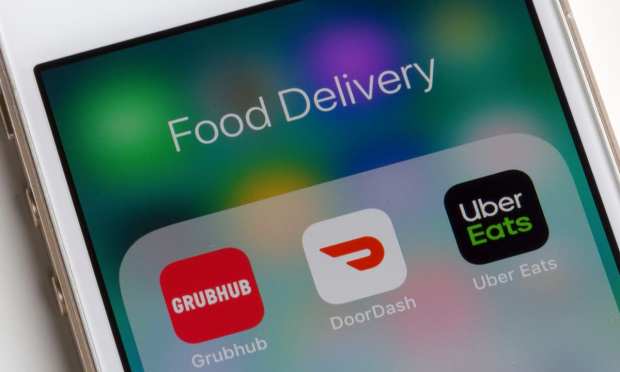DoorDash Revenue Soars As Aggregators Make Major Moves Towards Post-Pandemic Future

The first quarter of 2021 marked a turning point for major food delivery services. Encompassing the early stages of the vaccine rollout, the quarter began to give some indication of what consumers’ post-pandemic behaviors will look like, even while most remained bound to their pre-vaccination activities. In this period of flux, DoorDash reported Thursday (May 13), revenues grew 198 percent year over year to $1.1 billion, and total orders grew 219 percent year over year to 329 million.
These year-over-year comparisons are a somewhat odd measure, encompassing comparisons to both pre-pandemic ordering behavior in January and February of 2020 and to consumers’ unusual behavior at the very start of lockdown. Still, with this growth, DoorDash executives are optimistic about how consumers’ ordering behavior will trend in the post-pandemic future.
“Just over the course of this past year, the selection on the platforms improved in terms of the number of restaurants as well as new categories, such as convenience stores and grocery stores,” Chief Financial Officer Prabir Adarkar said on a call with analysts. “Quality has improved, our affordability has gotten better, and all these things continue to act in support of continued stickiness as far as consumers go.”
DoorDash’s growth has outpaced competitor Grubhub, which reported in April that, in Q1 2021, revenue grew 52 percent year over year to $550.6 million. Orders per day grew 44 percent to 745,700, which in the 90 days of the quarter comes out to 67.1 million orders, 80 percent lower than DoorDash’s total.
In terms of revenue growth, Uber Eats appears to be winning the delivery wars for the time being. As Uber reported earlier this month, delivery revenue was up 230 percent year over year from $527 million in Q1 2020 to $1.7 billion in Q1 2021.
“I think restaurants are seeing the benefits of having delivery as a core part of their business, and even in a reopening scenario, we think that a business that includes both walk-in and delivery is just a fundamentally better business,” Uber Chief Executive Officer Dara Khosrowshahi told analysts on the call. “And we can continue to have relationships with our restaurant partners on the delivery side. We watch competition on a local basis as far as marketplace pricing goes. We think while everyone’s approach is different, our pricing models are quite competitive with other players in the marketplace.”
Of course, revenue growth is far from the only metric of success. For a more nuanced ranking, one that takes into account channel coverage, up-to-date downloads, monthly average users, sessions per user, and average session length, check out PYMNTS’ Provider Ranking of Aggregators, updated monthly.
On that question of pricing, DoorDash recently announced its latest attempt to make the economics of third-party delivery feasible for delivery service, merchant, and consumer alike — a three-tiered model in which restaurants decide whether to pay DoorDash less, meaning that consumers need to pay a higher fee, or to pay more, charging consumers lower fees.
In the coming quarter, we will see the start of how DoorDash’s new pricing tiers affect sales and merchant relationships, as well as how the elimination of commission fees for eCommerce platform DoorDash Storefront, announced at the same time as this pricing plan, will affect business. We will also see how Uber Eats’ entry into the competitive German delivery market will shake out. For its part, Grubhub is currently in the midst of being acquired by Netherlands-based food delivery giant Just Eat Takeaway.com.
